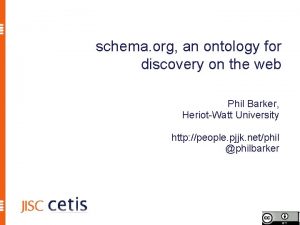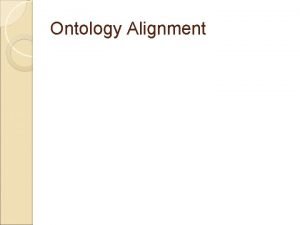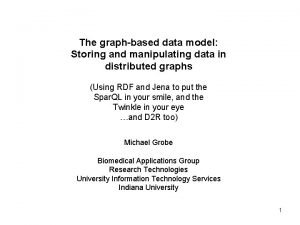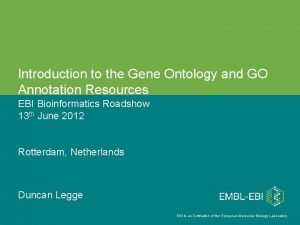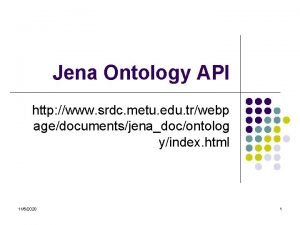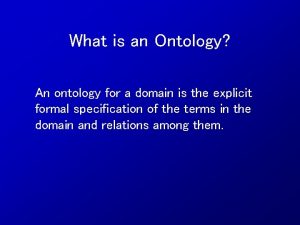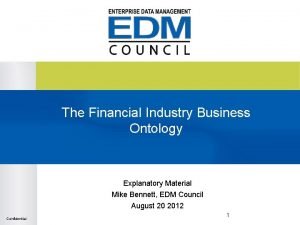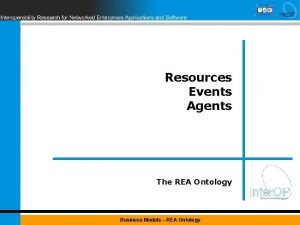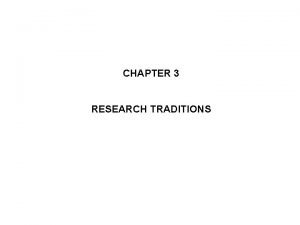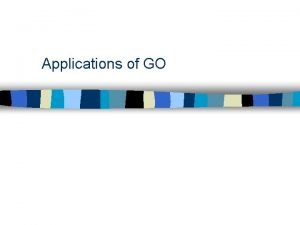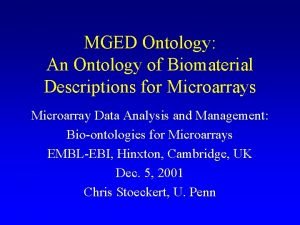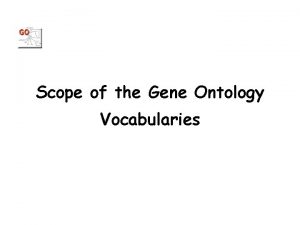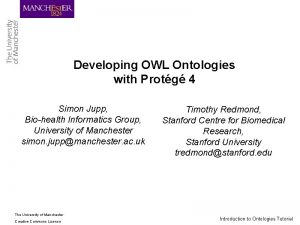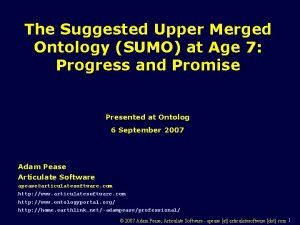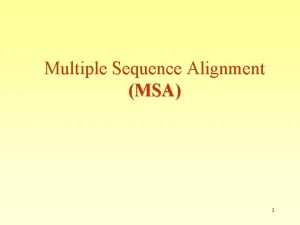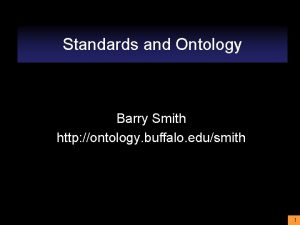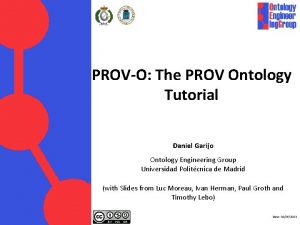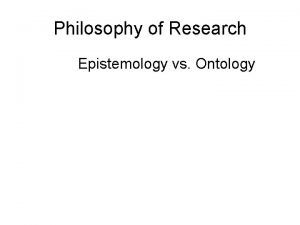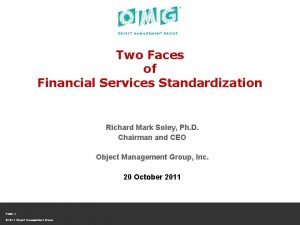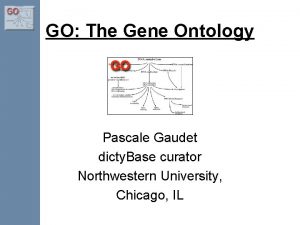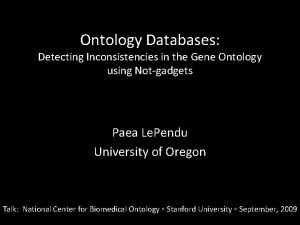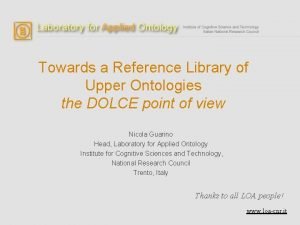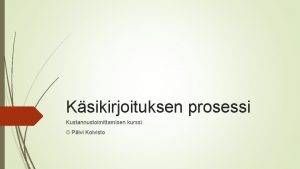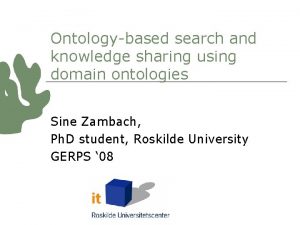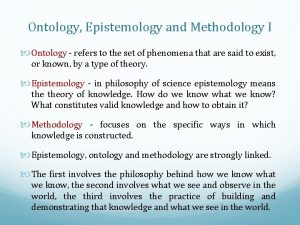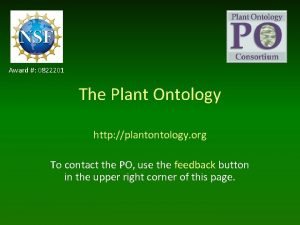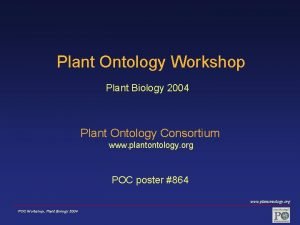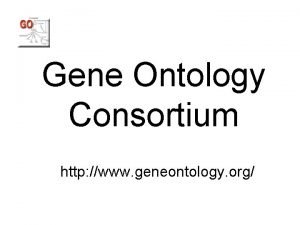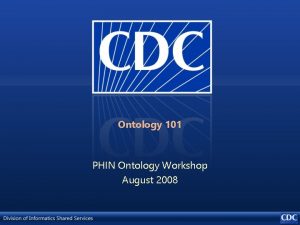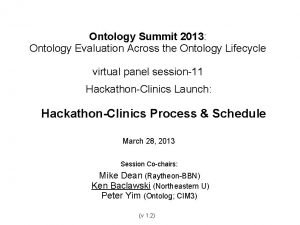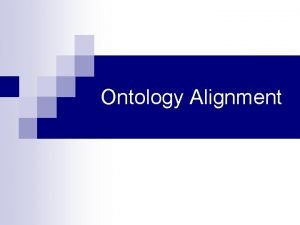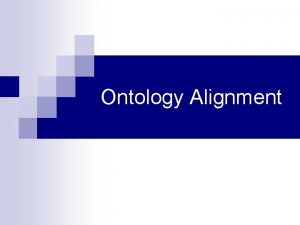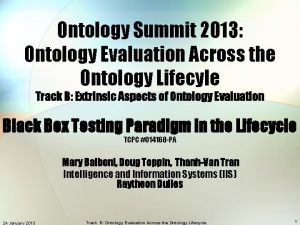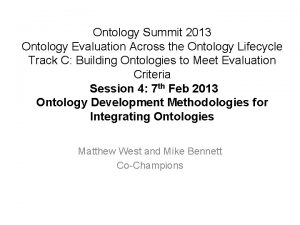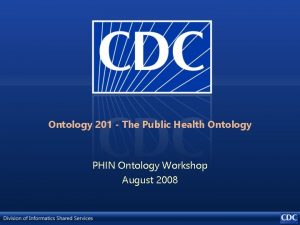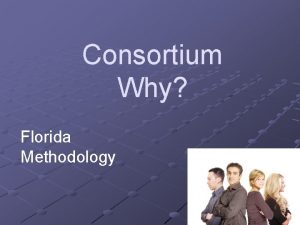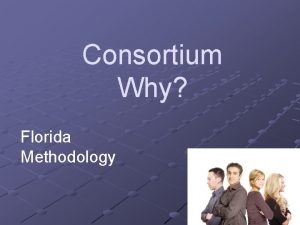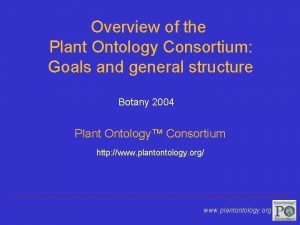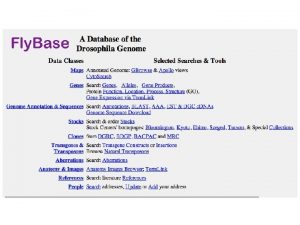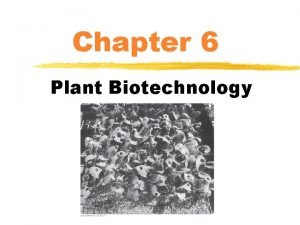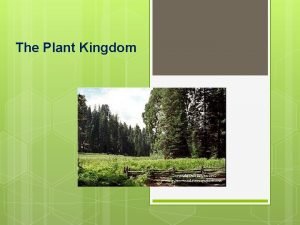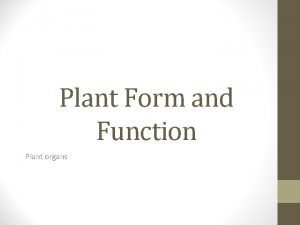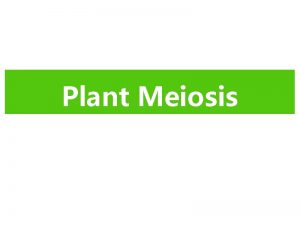Plant Ontology Consortium www plantontology org In this






























- Slides: 30

Plant Ontology Consortium www. plantontology. org

In this presentation: l l l l Why develop “Plant Ontology (PO)”? What is PO? How is PO designed and structured? Annotations to PO Who is using PO? How to use PO in your research? How to request your PO term?

Why develop PO? l More and more plants genome are getting sequenced l More and more datatypes are involved l More and more databases are developed

We need controlled vocabulary A set of defined terms to describe knowledge of a specific domain l Avoid ambiguity - conducting a search in a database that use controlled vocabulary is efficient and precise l User can make a meaningful cross-species query across databases

They are all “Fruit” The seed-bearing structure in angiosperms, formed from the ovary after flowering Maize kernel Arabidopsis silique Peapod Rice grain/caryopsis Berry

What is “ Plant Ontology “ ? l PO is an arrangement of controlled vocabularies - plant anatomical, morphological structures - plant growth and developmental stages l Based on internationally published/accepted terminology and their definitions l Recognized by computers l A tool for annotation of gene expression patterns and phenotypes of germplasms across angiosperms

What is in a PO term?

Rationale on creating a term to describe plant structure l l l Botanical terms - anatomy and morphology Derivation - origin of plant parts and cell lineage; spatial/positional organization of tissues, organs and organ systems (mainly for annotation purpose) Avoids subcellular structure (GO has it) Avoids attributes (qualifiers) of anatomical terms Use synonym fields to cover various instances, types and terms with attributes

How is PO structured? (graphical view) Similar to GO, the PO is organized into a hierarchical network called the Directed Acyclic Graph (DAG)

How is PO structured? (tree view via Ami. Go)

Use “Sensu” (in the sense of; restricted to) FLORET www. vplants. org

True Path Rule The path from any node (term) all the way to the top node of the tree must be biologically correct. flower (generic) is_a part_of lemma floret is_a Solution: add floret as instance of flower and add an instance of a maize floret (sensu Poaceae) part_of lemma

Annotation using PO Objects for annotation: Genes, Gene products, such as transcripts, proteins, ESTs, c. DNA, QTLs, mutants, germplasm, phenotypes, microarray data ……etc Example: Annotations to a plant structure term: pericarp (PO: 0009084) in the POC database

Visit www. plantontology. org

Search “pericarp”

Search result click

Description of “pericarp” scroll

Gene Product associations click

Ch 1 from Maiza. GDB

CYP 707 A 1 from TAIR click

Annotation details

QTL “AQGD 029” in Gramene

Get detailed View check click

Detailed view

Who use PO? Gramene http: //www. gramene. org TAIR http: //www. arabidopsis. org

Who use PO? SGN http: //www. sgn. cornell. edu NASC http: //arabidopsis. info

Who use PO? Genevestigator https: //www. genevestigator. ethz. ch/ BRENDA http: //www. brenda. uni-koeln. de/

There are more, Yours is here!

How to apply PO in your research? l Find appropriate PO terms for your species of interest; if no term, request it! l Curate your objects using PO l Start making cross-species querying l Submit your annotation to POC or species-specific databases

Submit your PO term request!
 Schema .org
Schema .org Ontology alignment
Ontology alignment Twinkle helicase
Twinkle helicase Gene ontology
Gene ontology Metu class
Metu class What is an ontologist
What is an ontologist Financial industry business ontology
Financial industry business ontology Ontology schema
Ontology schema Resources events agents
Resources events agents Ontology, epistemology, axiology
Ontology, epistemology, axiology Ontology vs epistemology vs methodology
Ontology vs epistemology vs methodology Gene ontology project
Gene ontology project Ontological definition
Ontological definition Types of ontology
Types of ontology Gene ontology project
Gene ontology project Pizza ontology
Pizza ontology Suggested upper merged ontology
Suggested upper merged ontology Ontology alignment
Ontology alignment Barry smith ontology
Barry smith ontology Provo ontology
Provo ontology Epistemology vs ontology
Epistemology vs ontology Ontology editors
Ontology editors Business ontology
Business ontology Dicty base
Dicty base Ontology
Ontology Dolce ontology
Dolce ontology Ontological vs epistemological
Ontological vs epistemological Ontology kurssi
Ontology kurssi Basic formal ontology
Basic formal ontology Football ontology
Football ontology Ontology epistemology methodology
Ontology epistemology methodology
